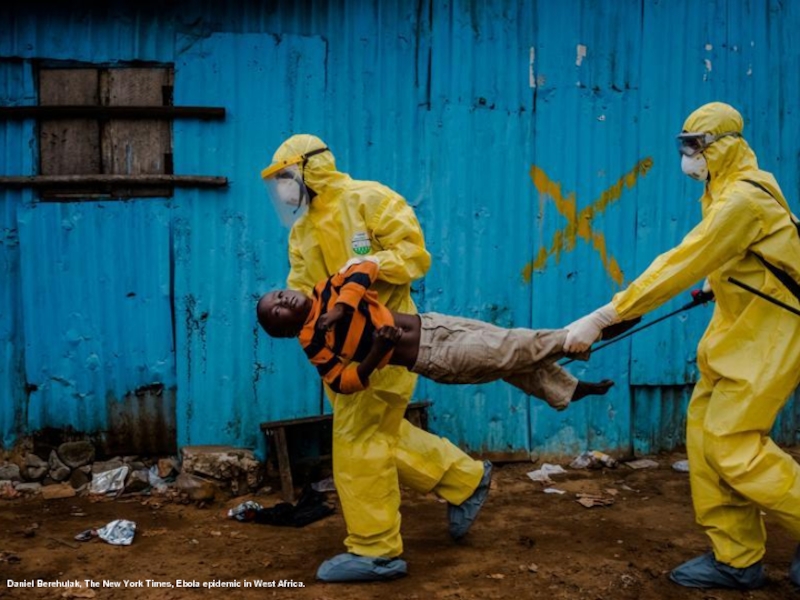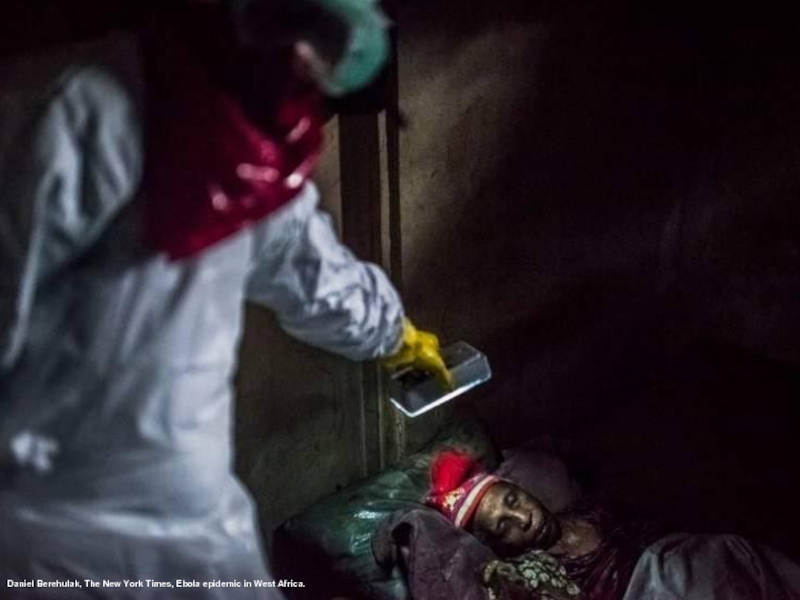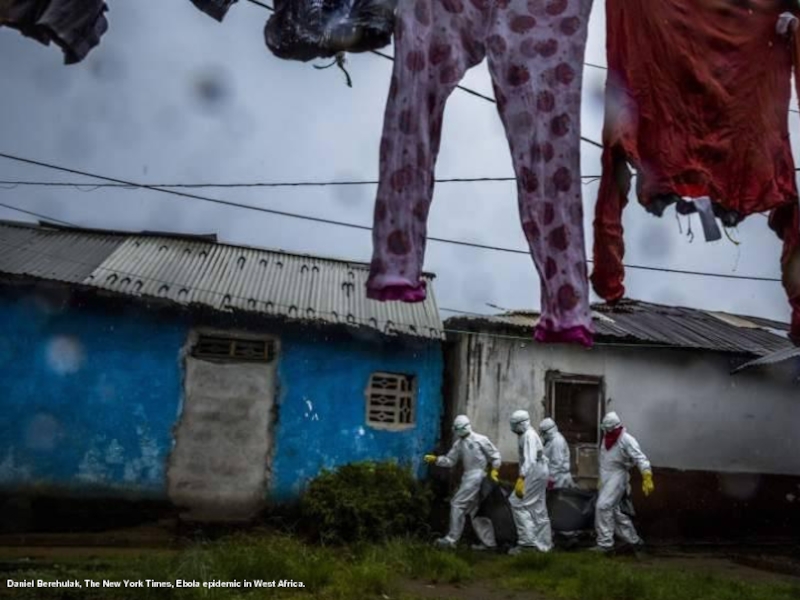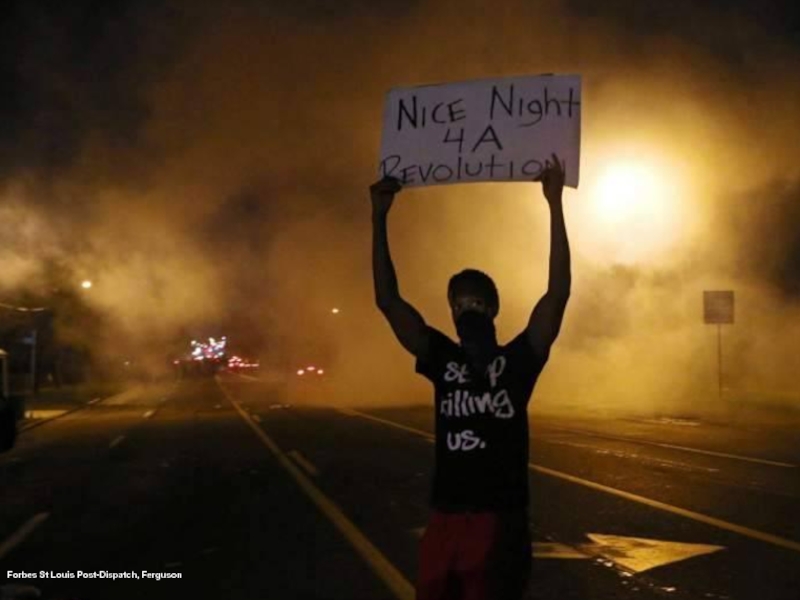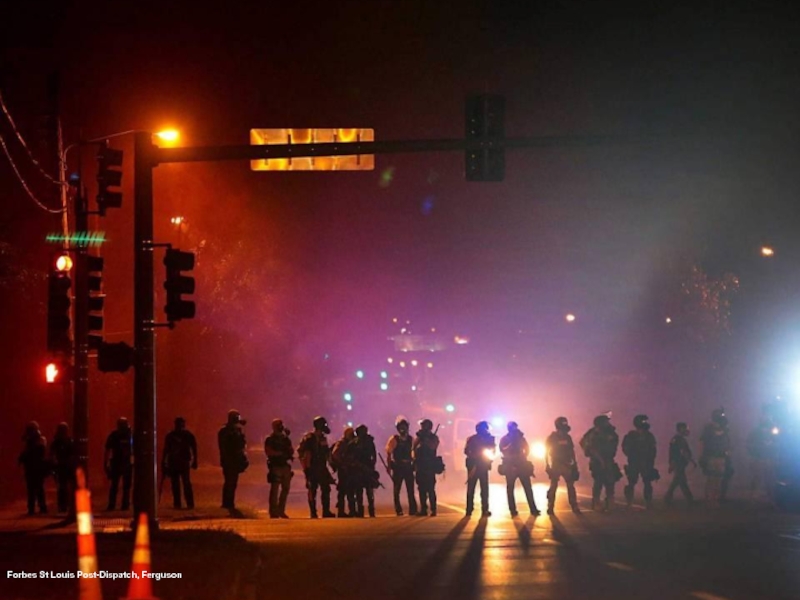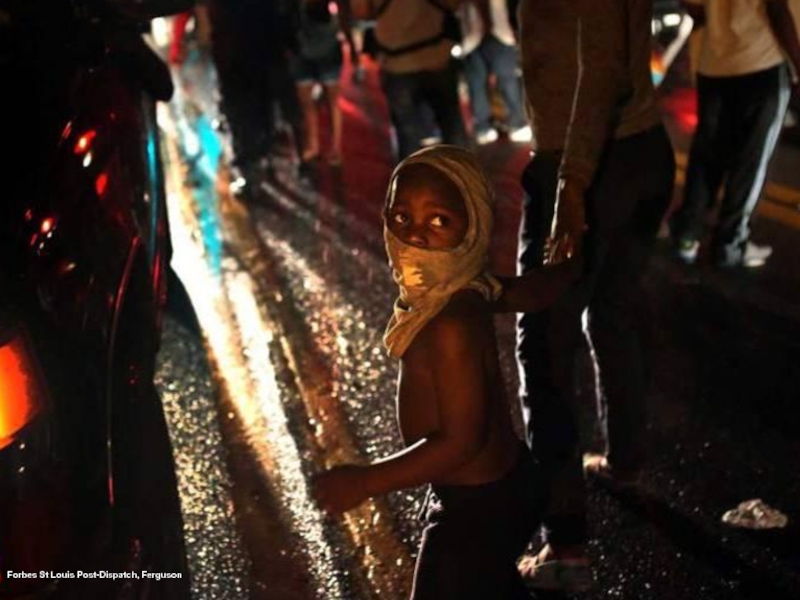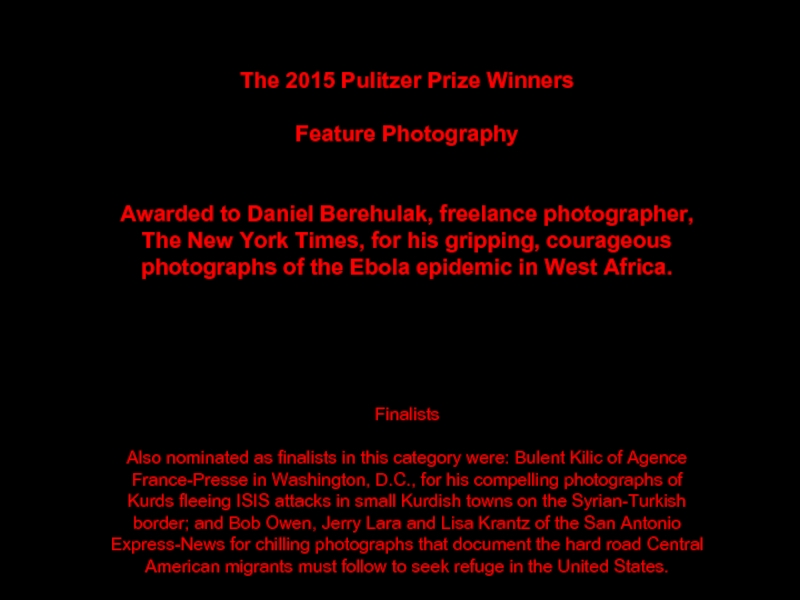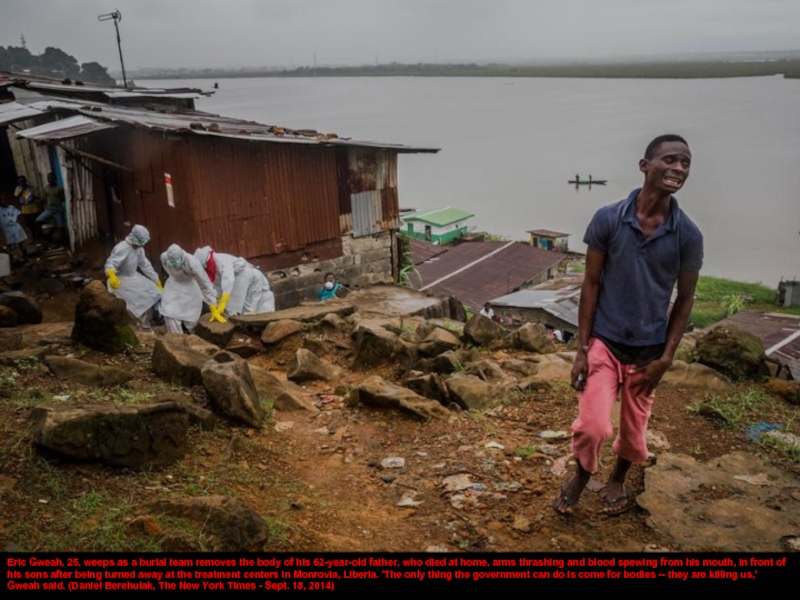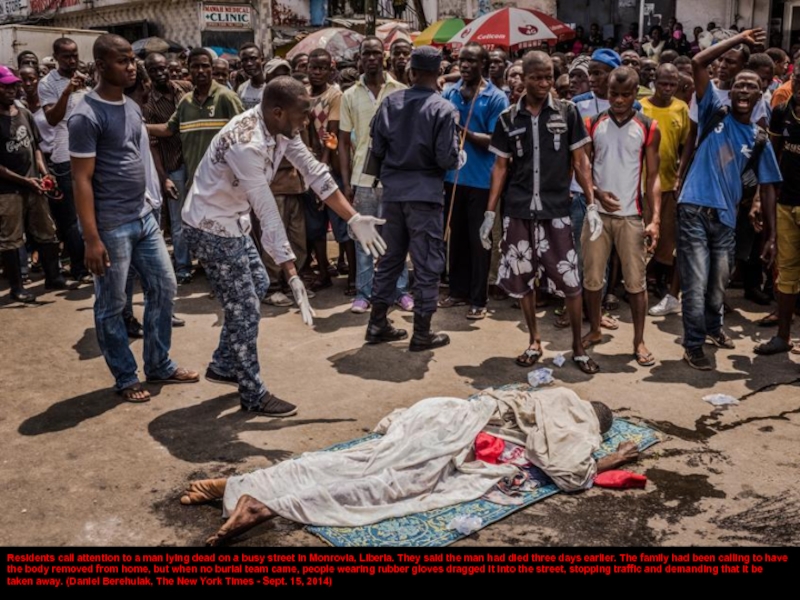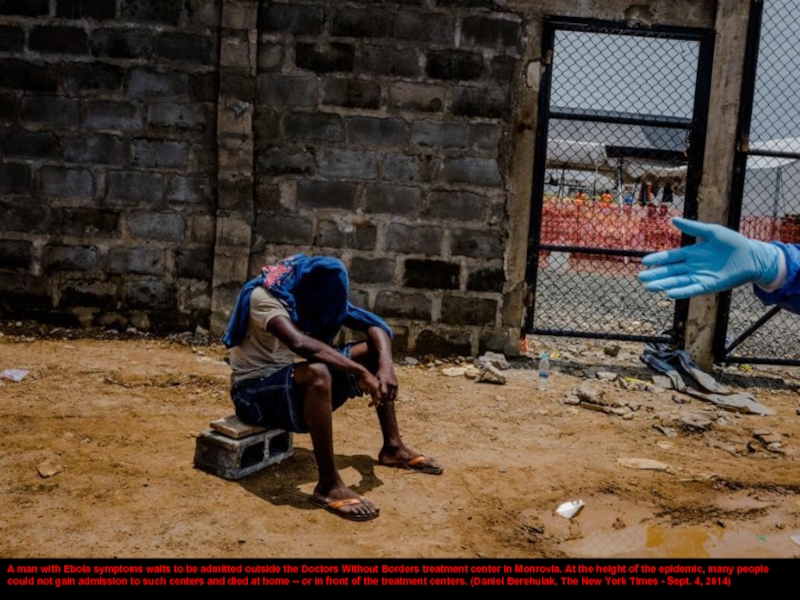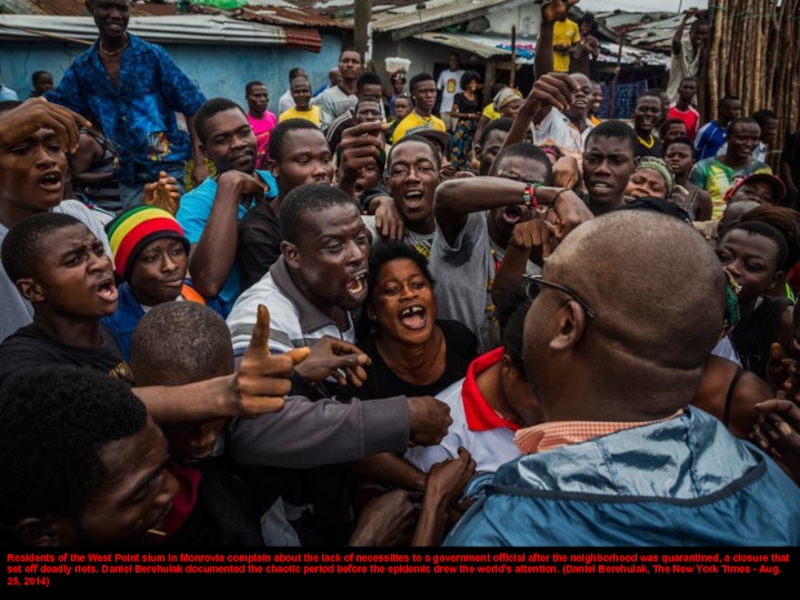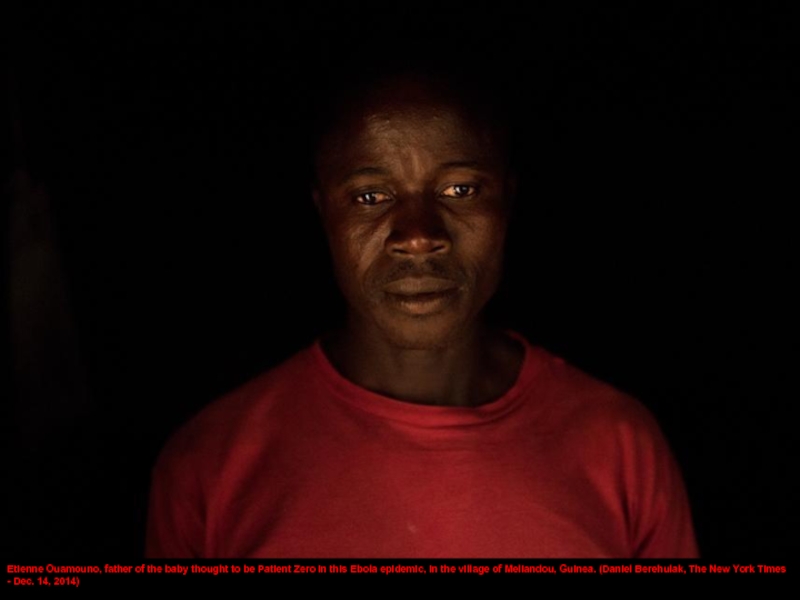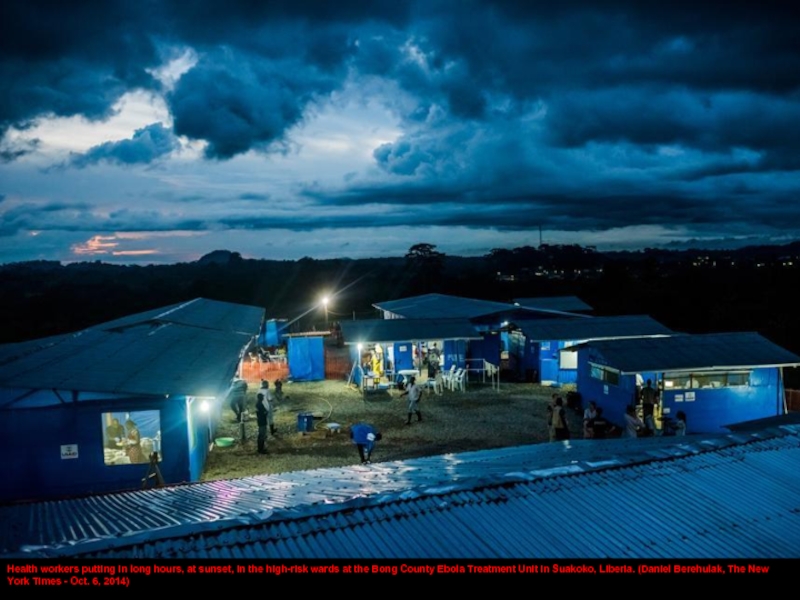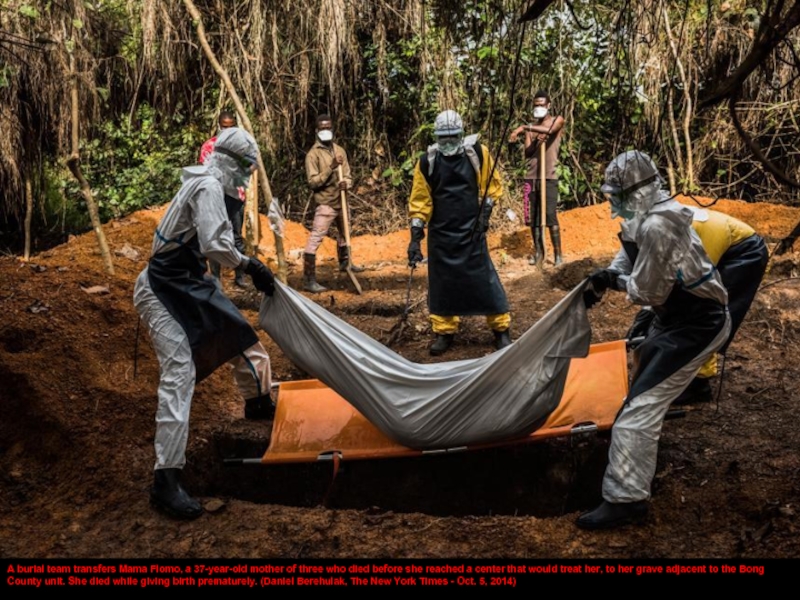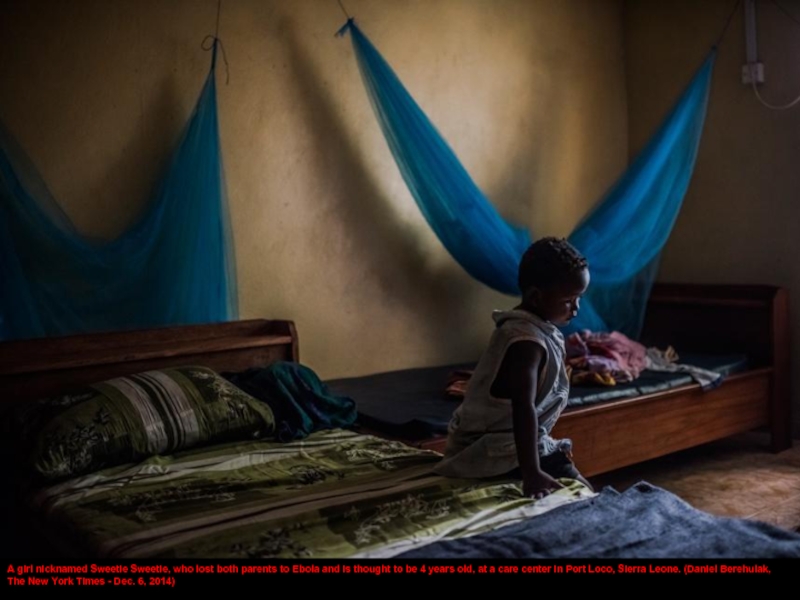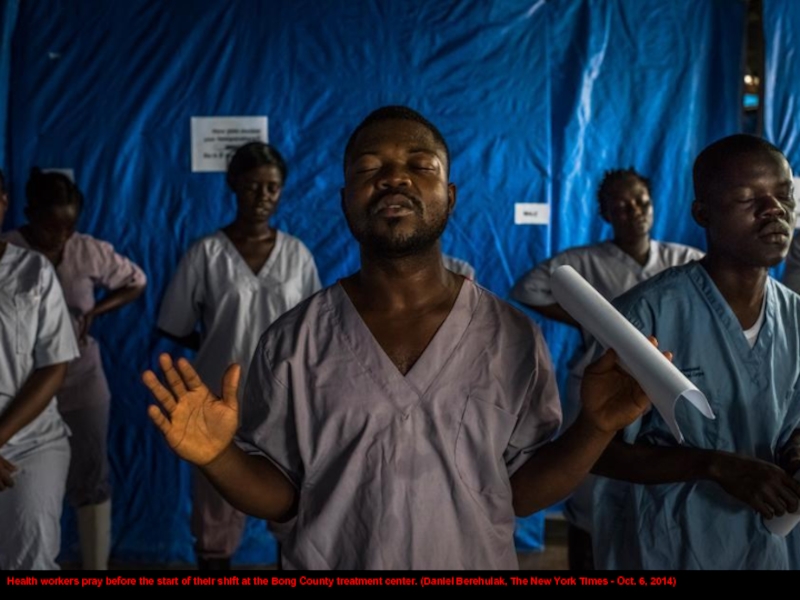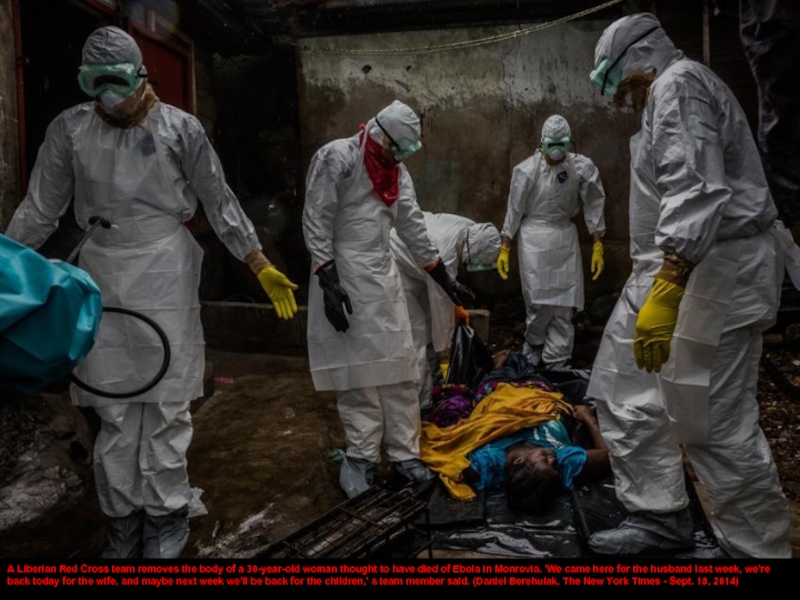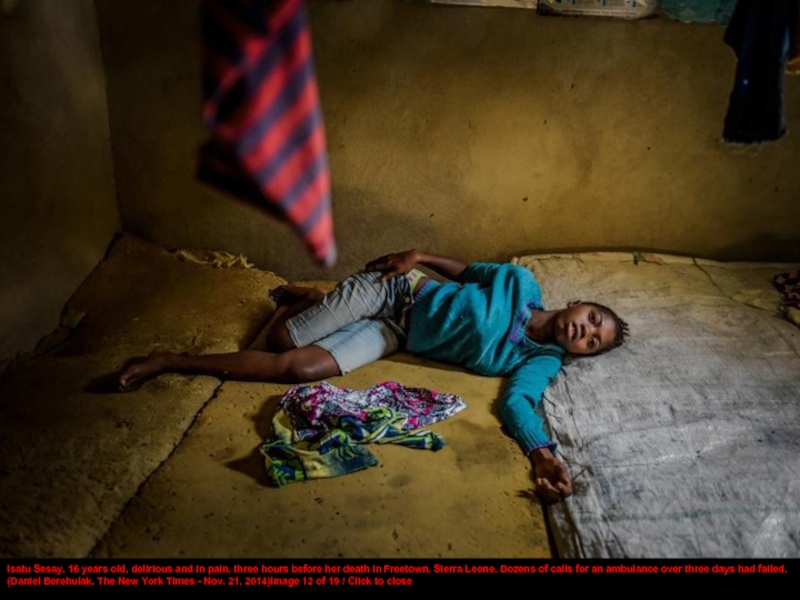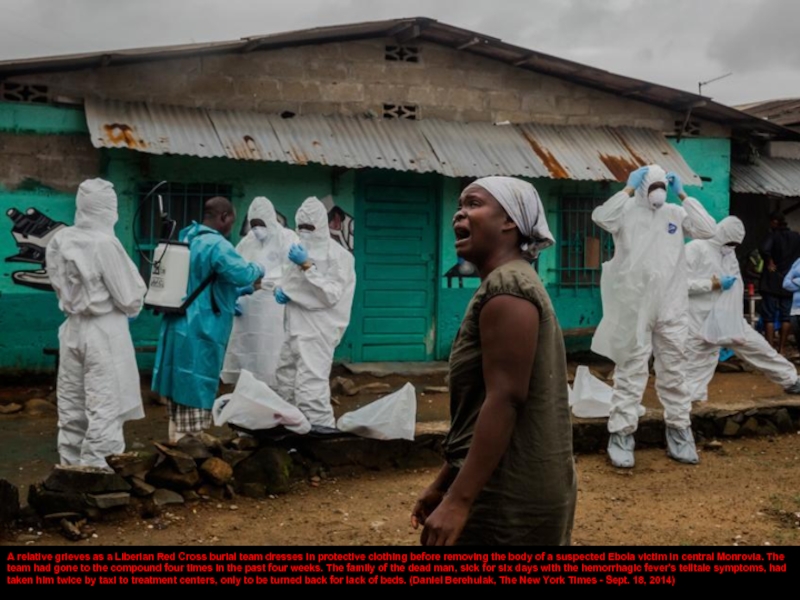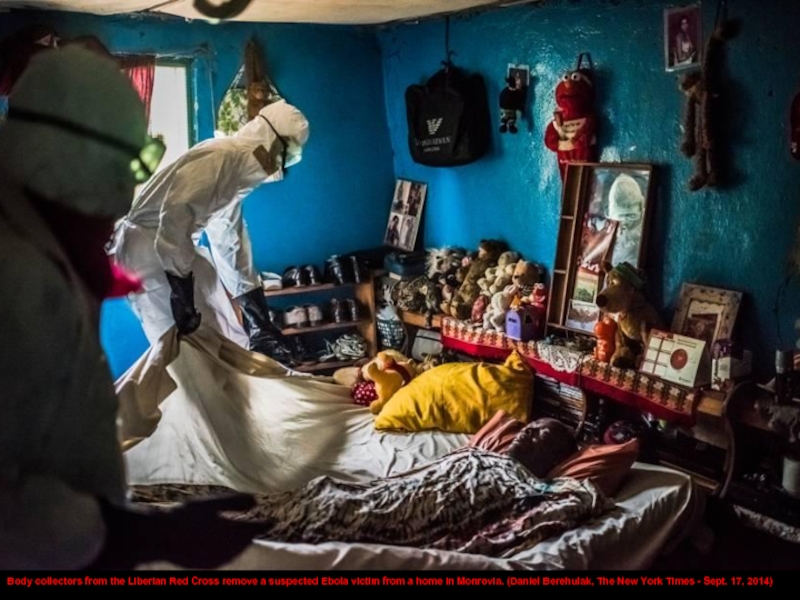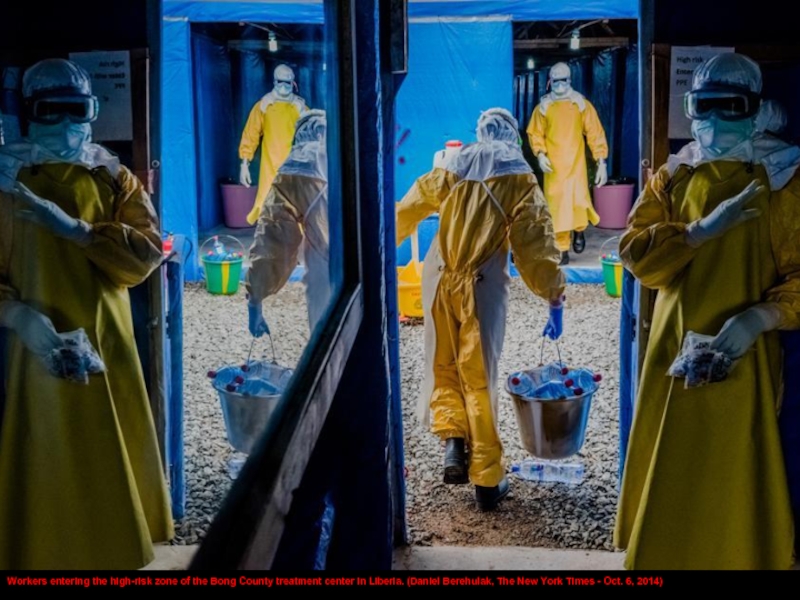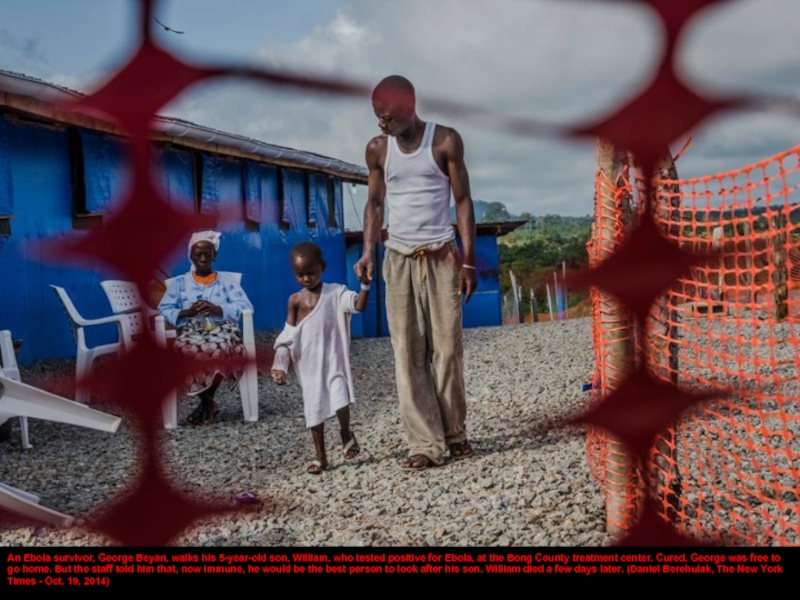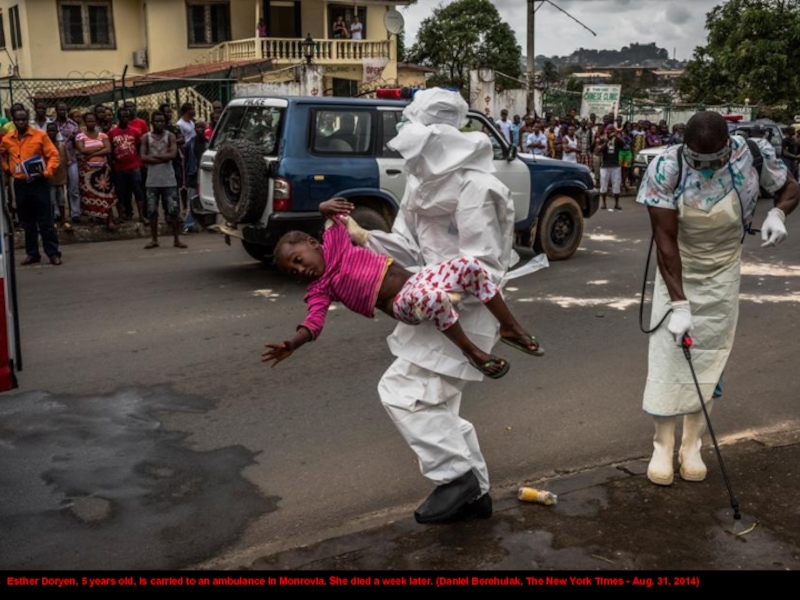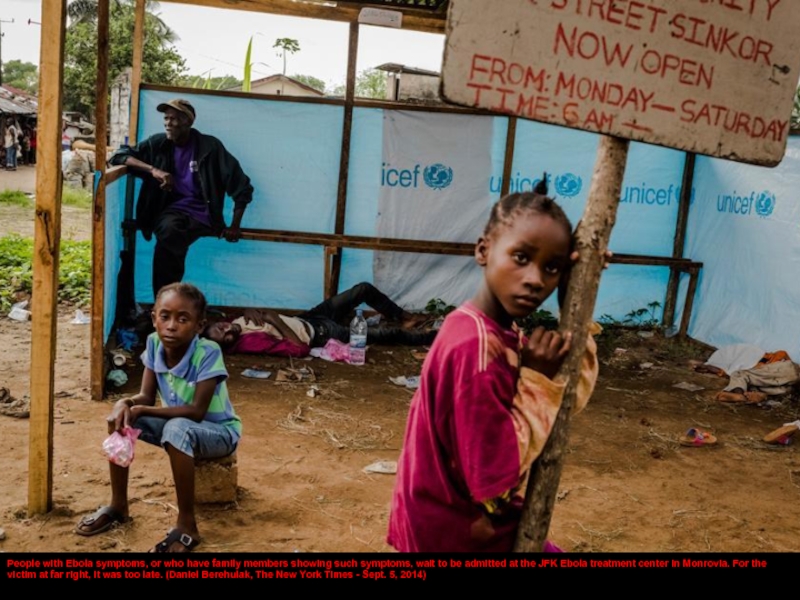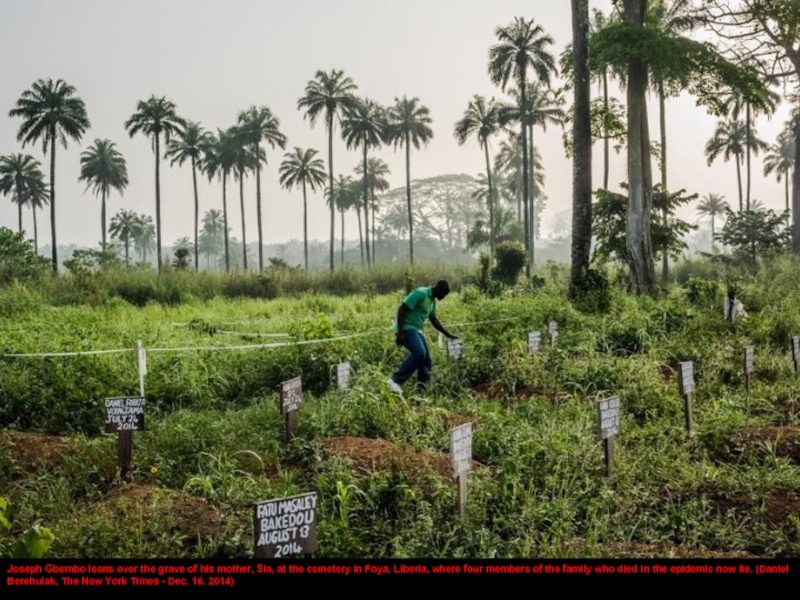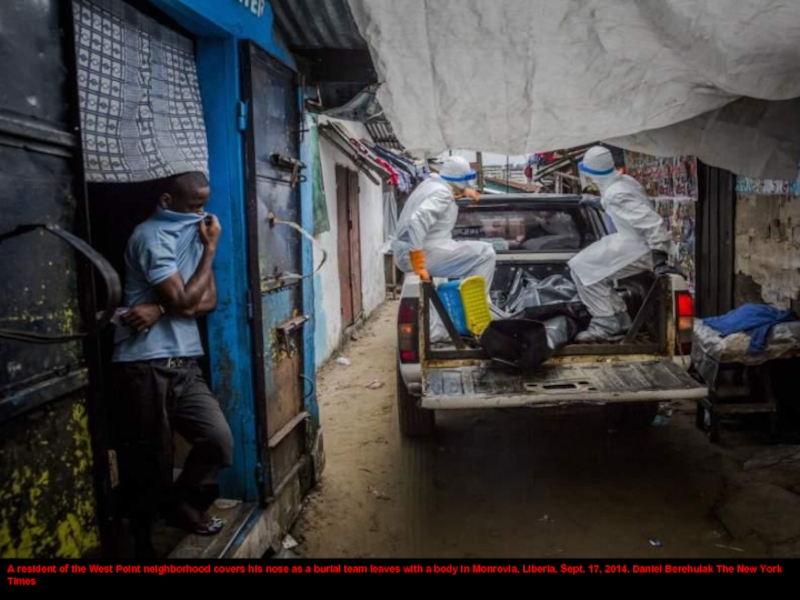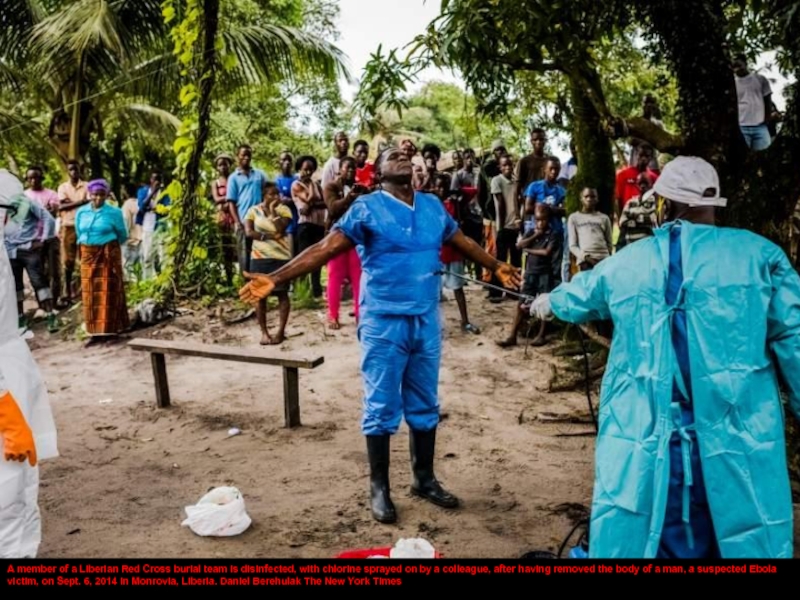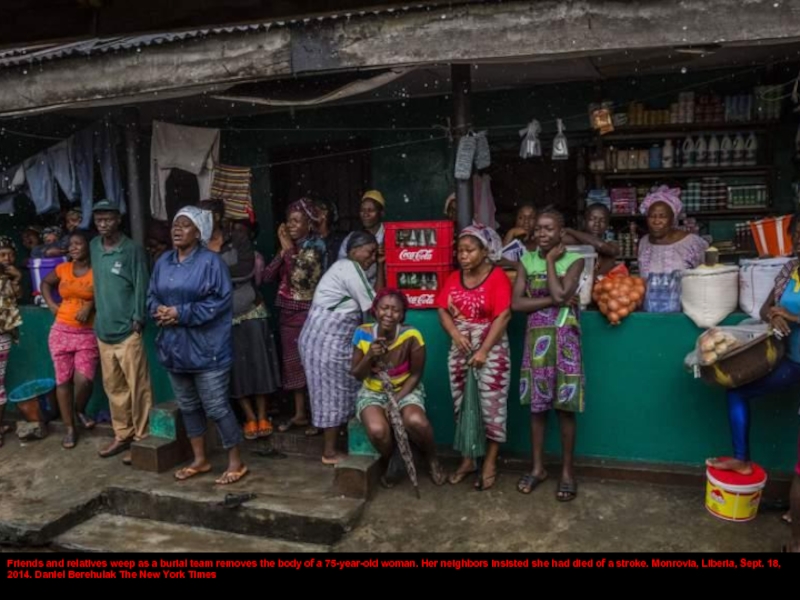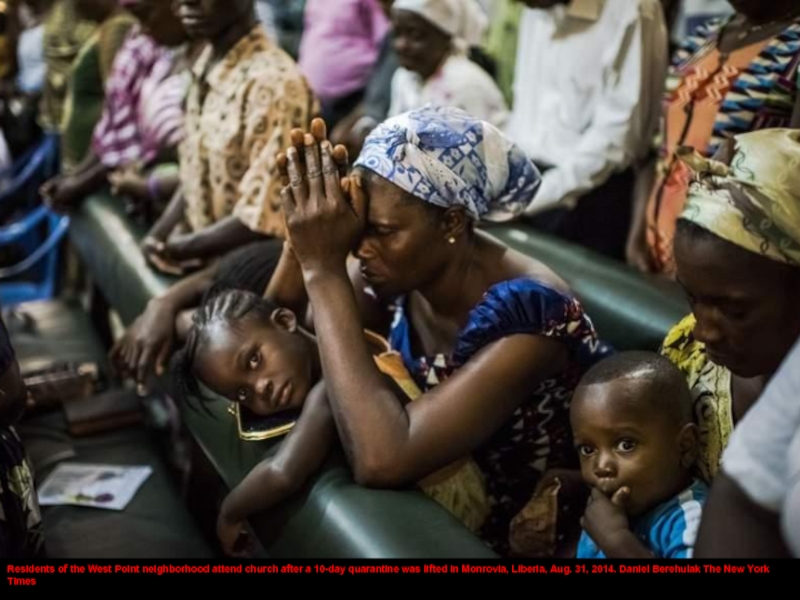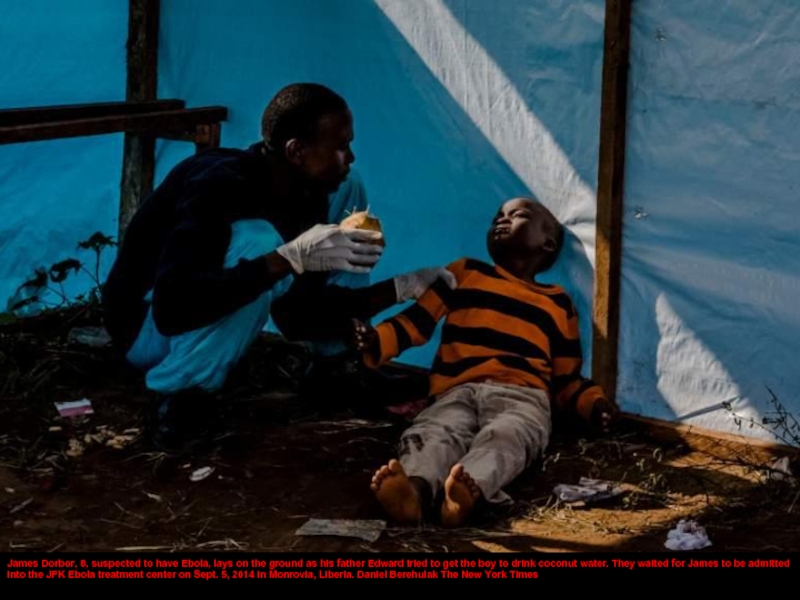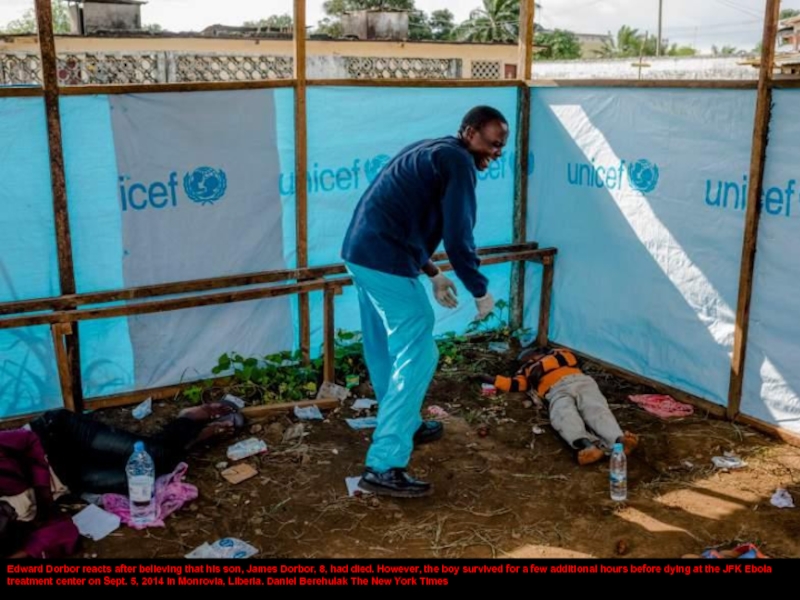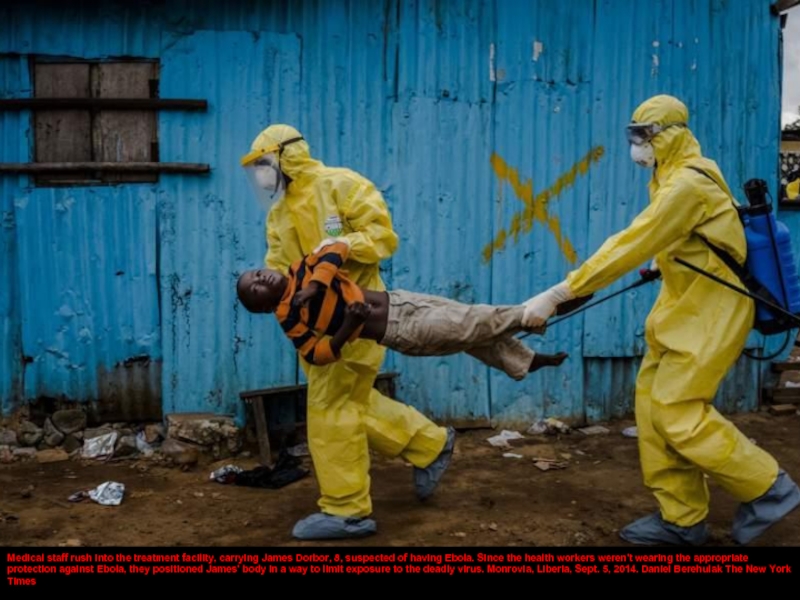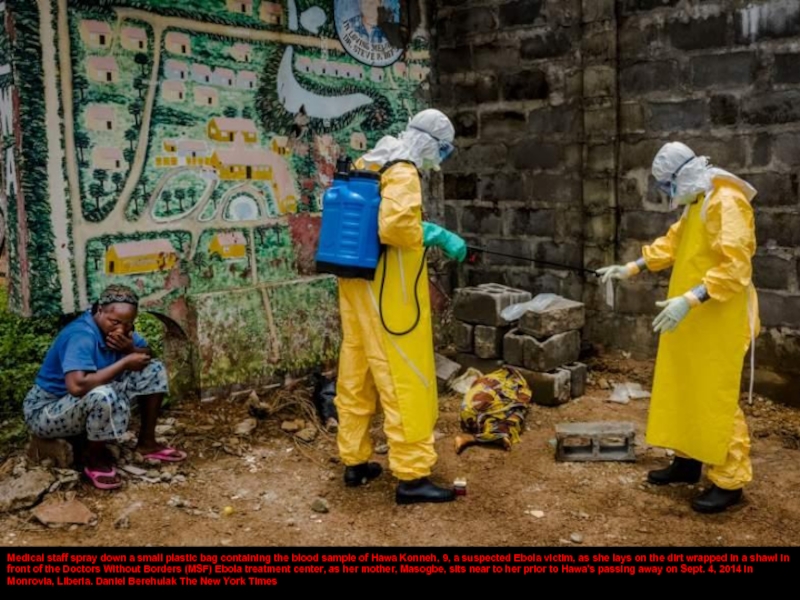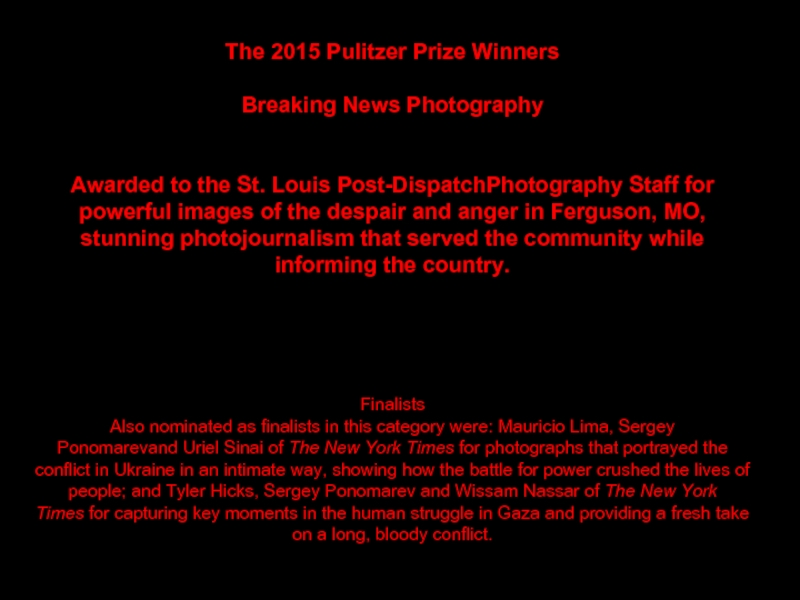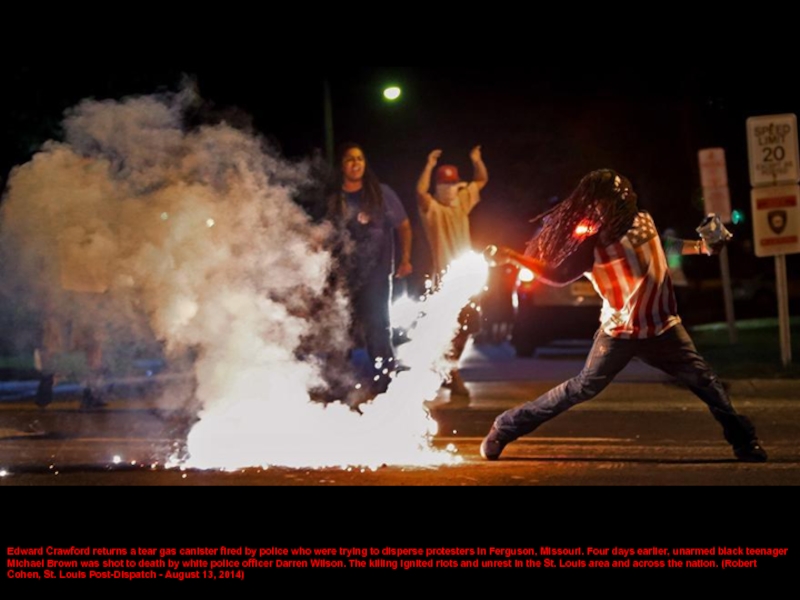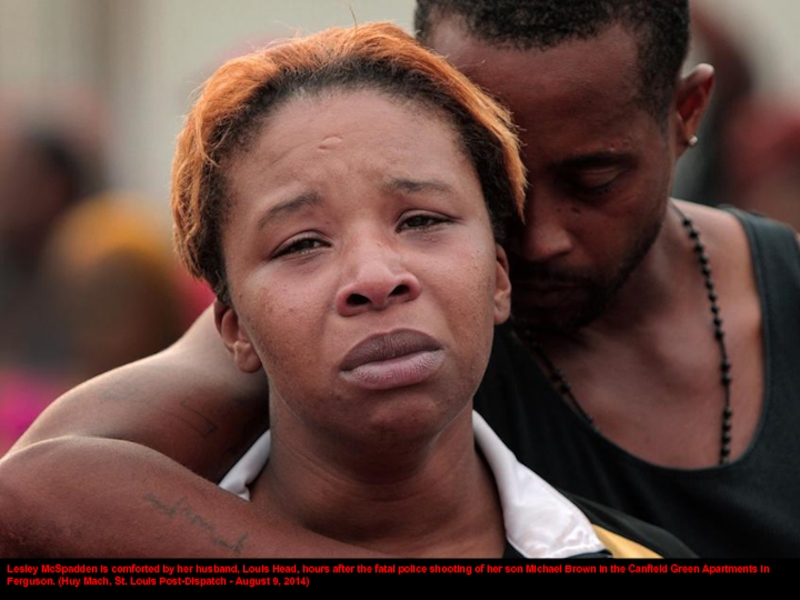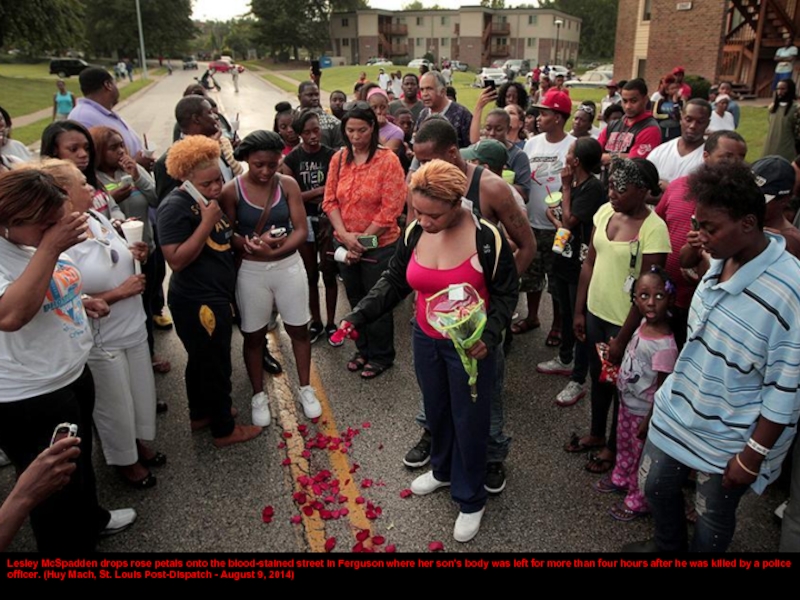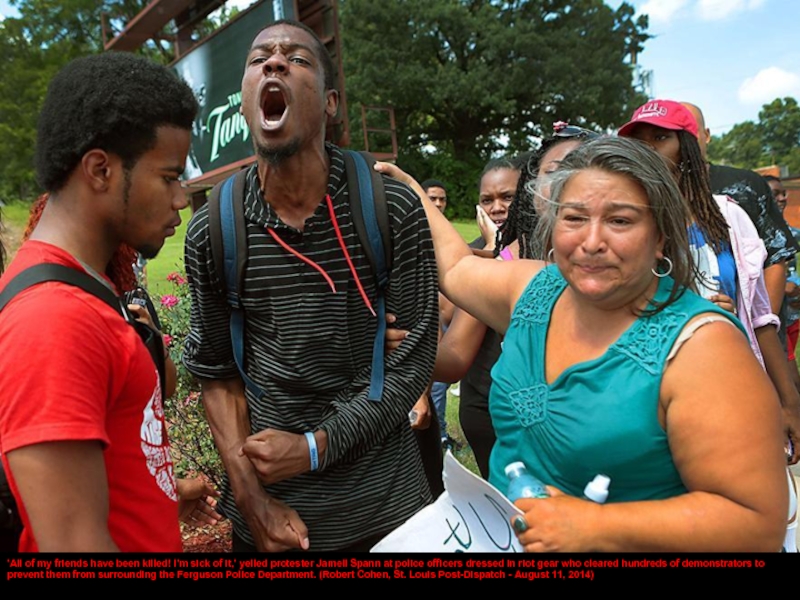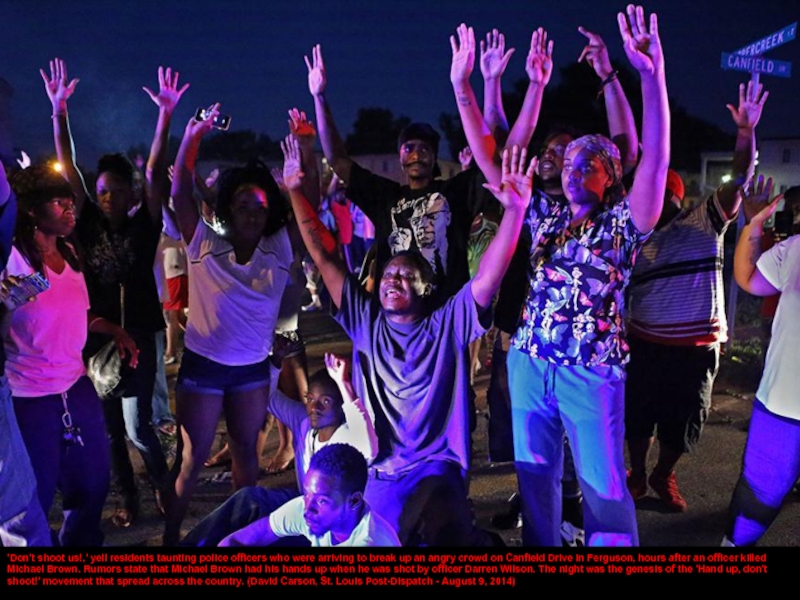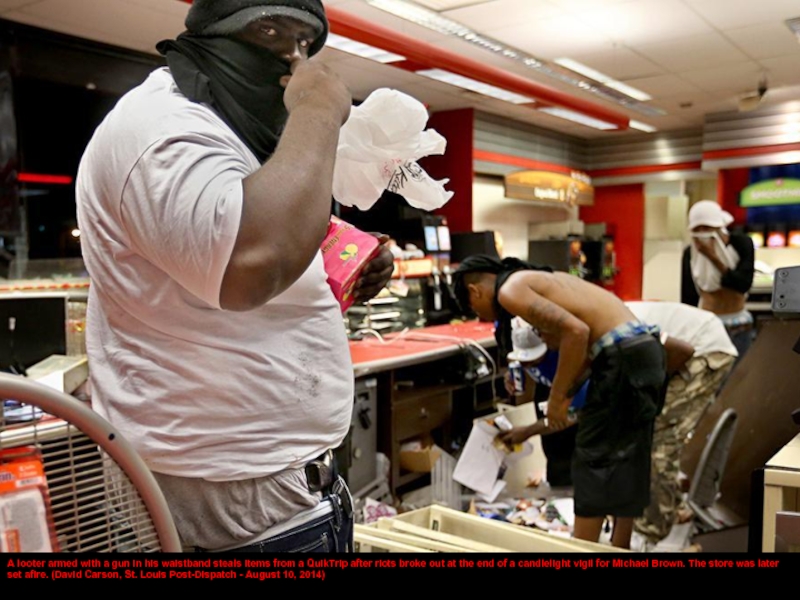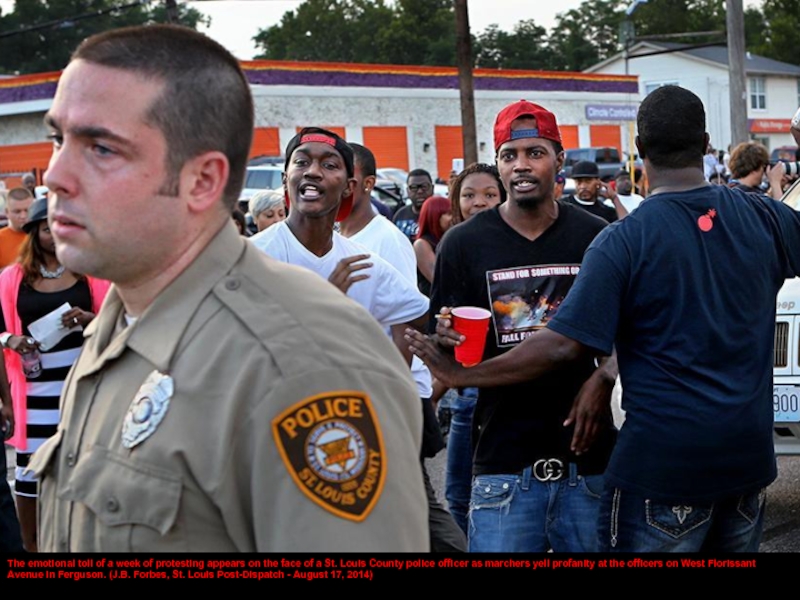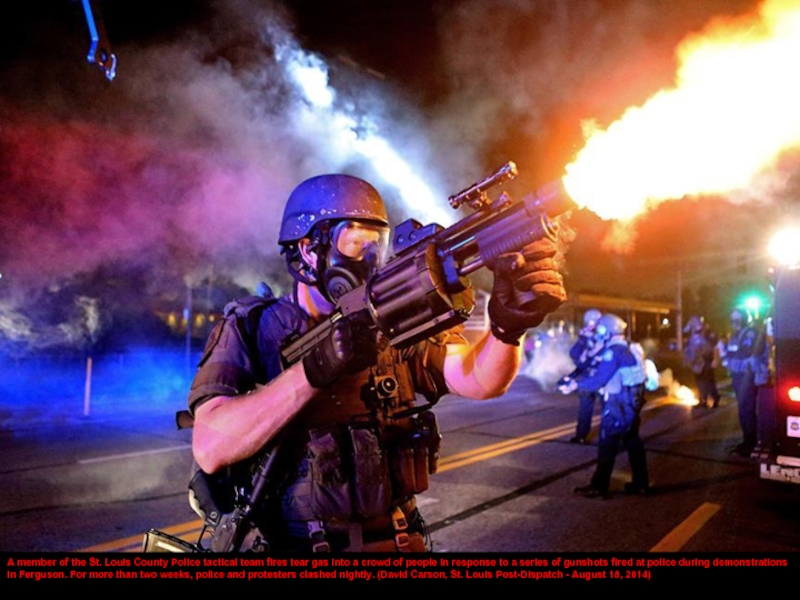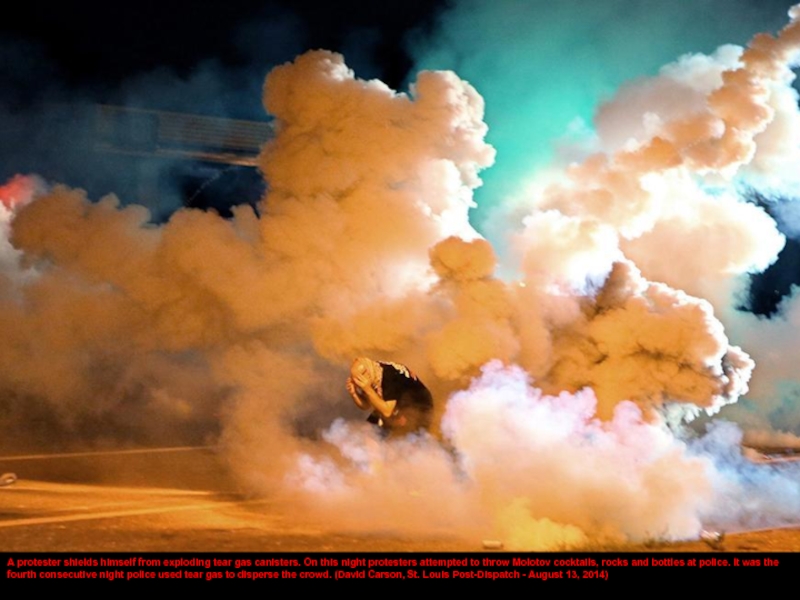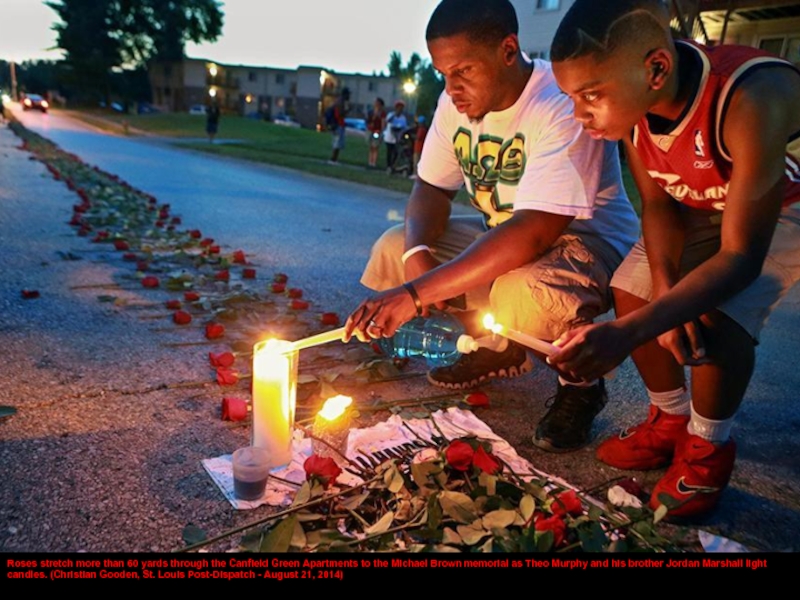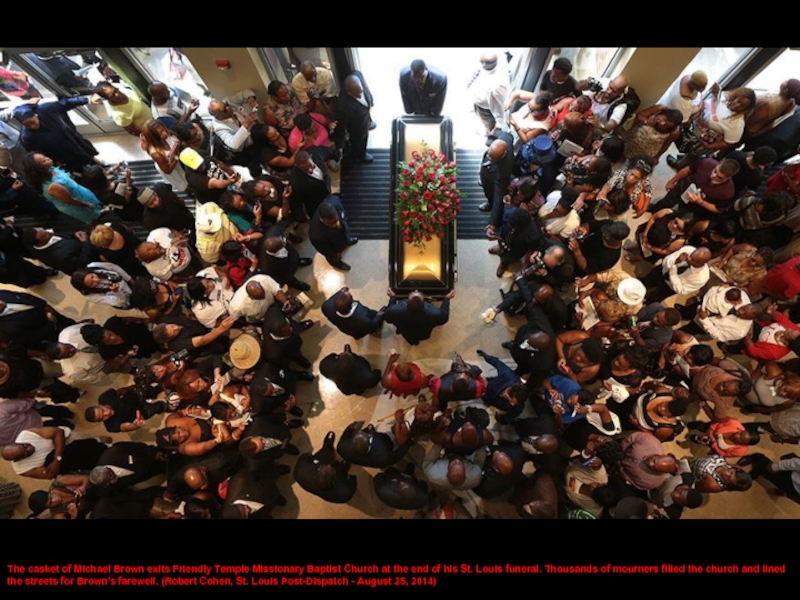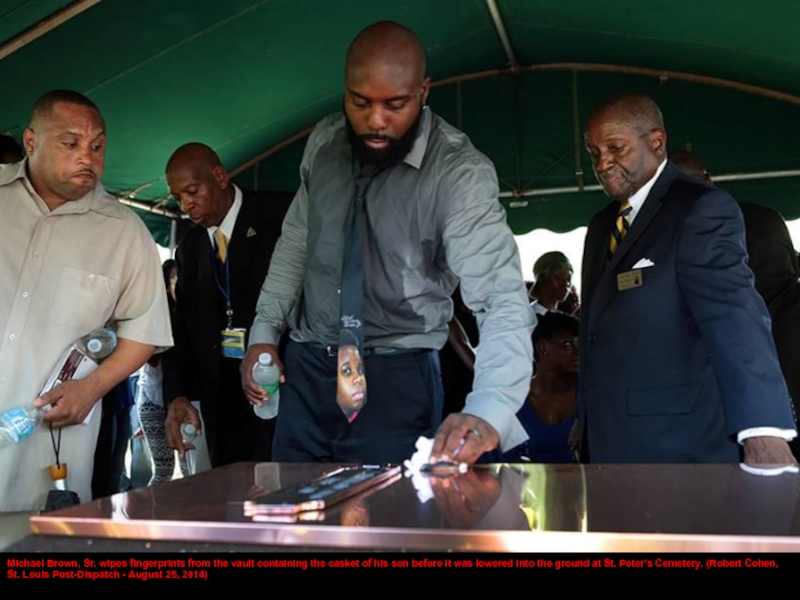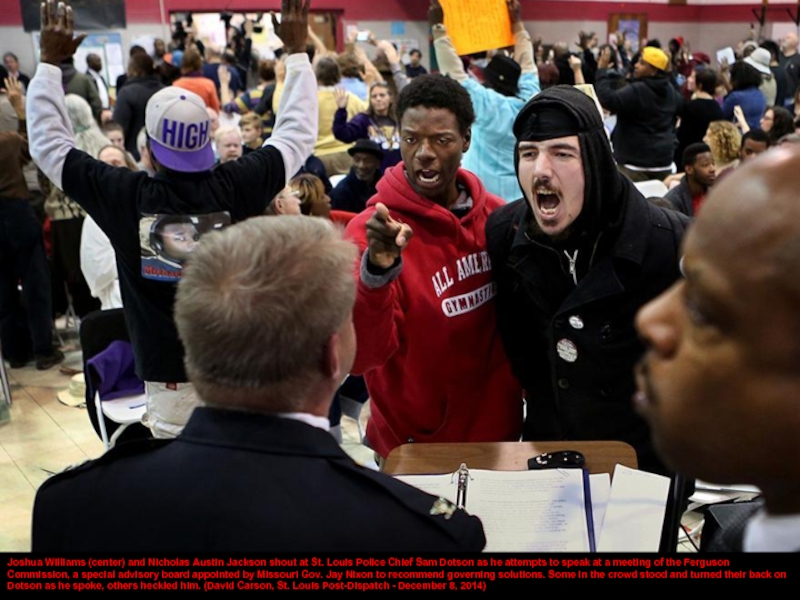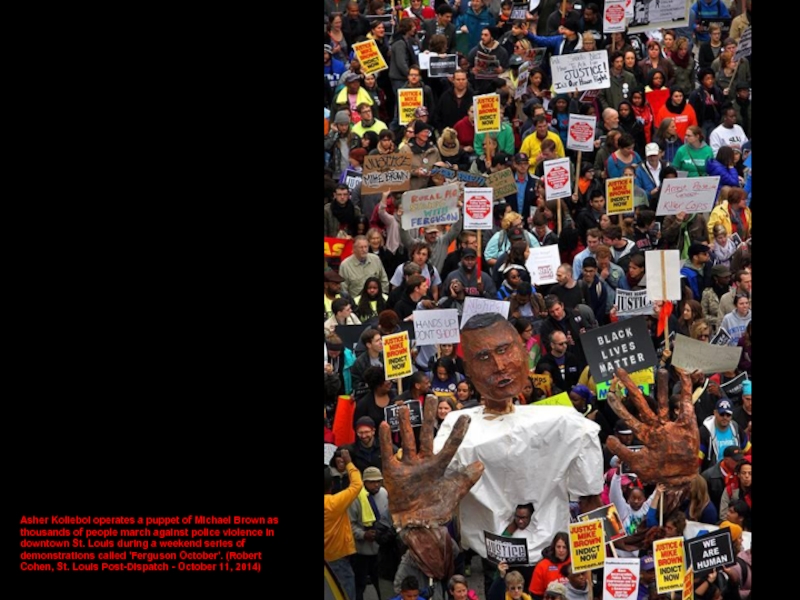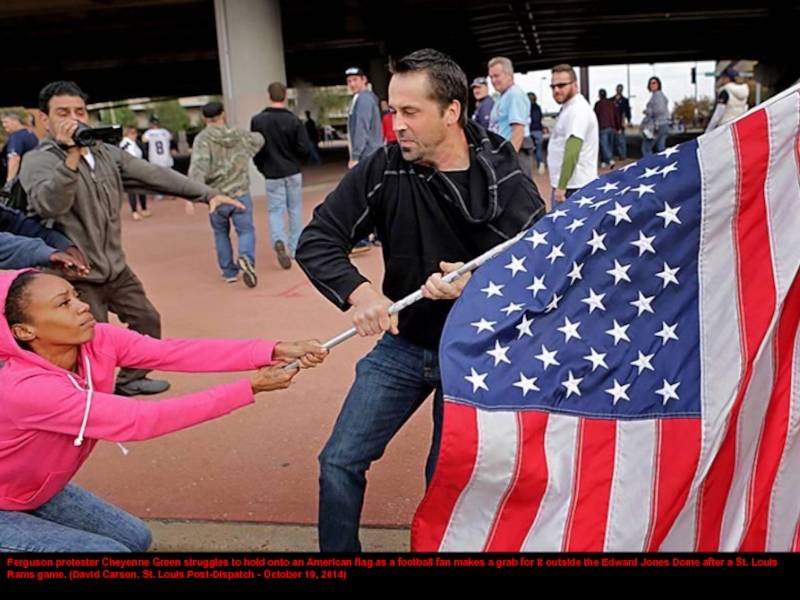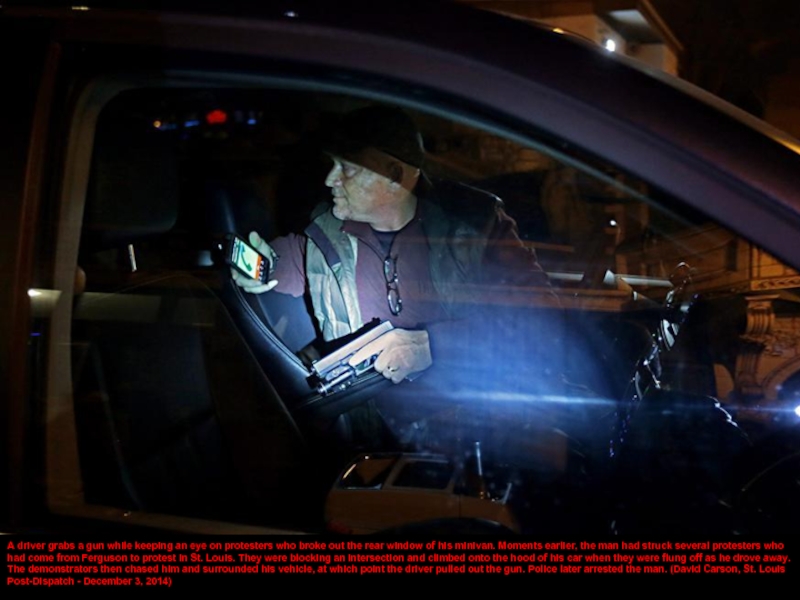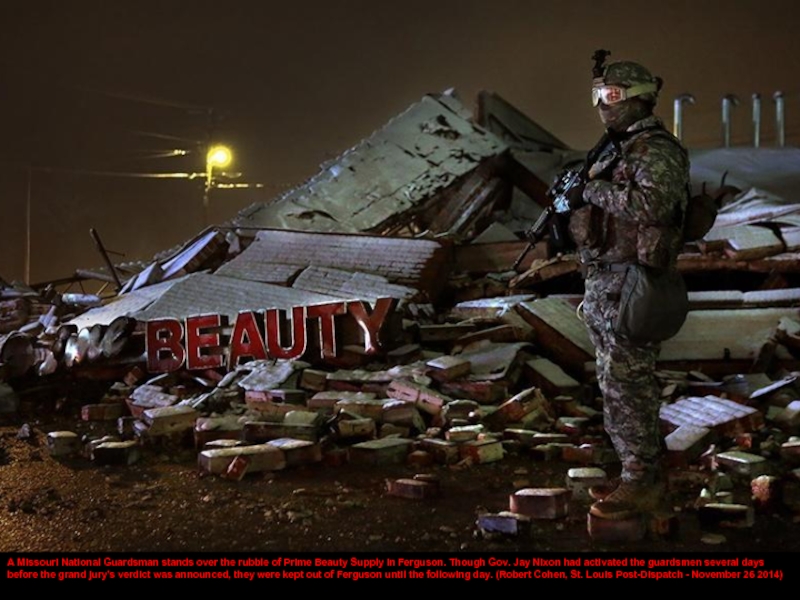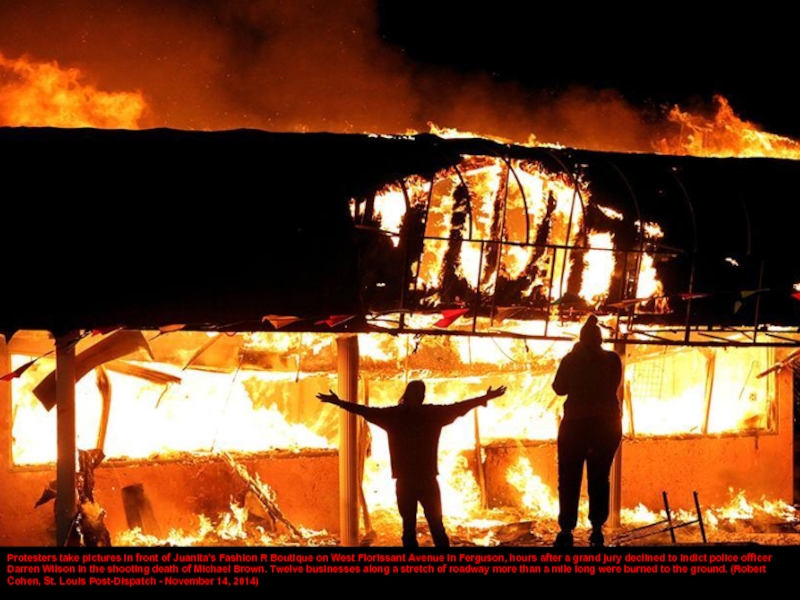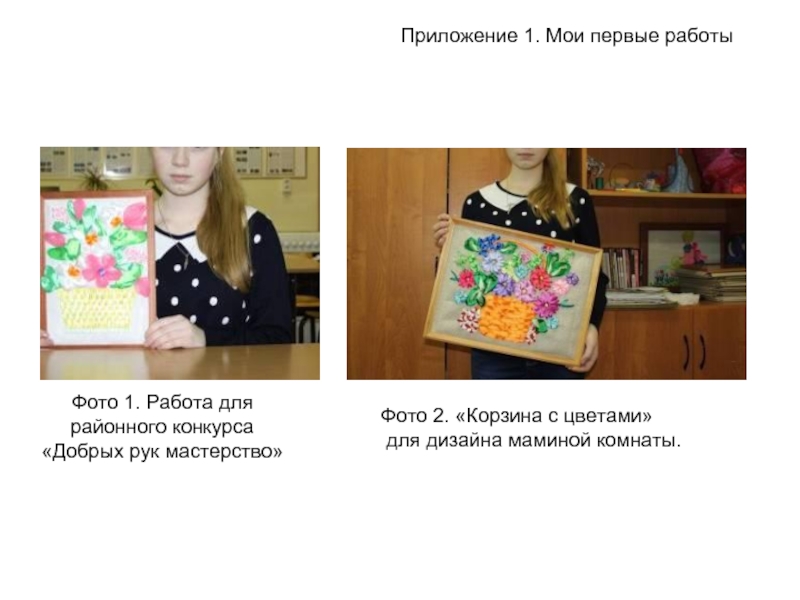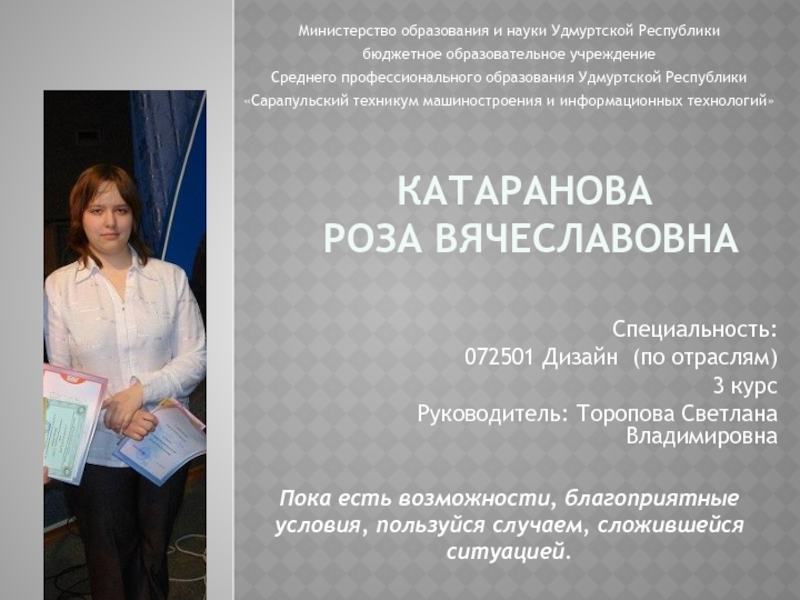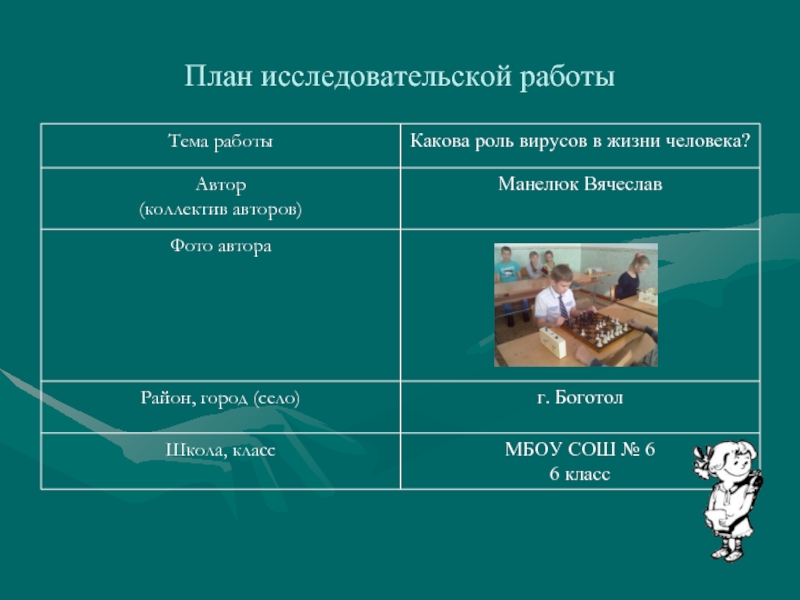- Главная
- Разное
- Дизайн
- Бизнес и предпринимательство
- Аналитика
- Образование
- Развлечения
- Красота и здоровье
- Финансы
- Государство
- Путешествия
- Спорт
- Недвижимость
- Армия
- Графика
- Культурология
- Еда и кулинария
- Лингвистика
- Английский язык
- Астрономия
- Алгебра
- Биология
- География
- Детские презентации
- Информатика
- История
- Литература
- Маркетинг
- Математика
- Медицина
- Менеджмент
- Музыка
- МХК
- Немецкий язык
- ОБЖ
- Обществознание
- Окружающий мир
- Педагогика
- Русский язык
- Технология
- Физика
- Философия
- Химия
- Шаблоны, картинки для презентаций
- Экология
- Экономика
- Юриспруденция
Daniel Berehulak, The New York Times, Ebola epidemic in West Africa. презентация
Содержание
- 1. Daniel Berehulak, The New York Times, Ebola epidemic in West Africa.
- 2. Daniel Berehulak, The New York Times, Ebola epidemic in West Africa.
- 3. Daniel Berehulak, The New York Times, Ebola epidemic in West Africa.
- 4. Forbes St Louis Post-Dispatch, Ferguson
- 5. Forbes St Louis Post-Dispatch, Ferguson
- 6. Forbes St Louis Post-Dispatch, Ferguson
- 7. The 2015 Pulitzer Prize Winners
- 8. The 2015 Pulitzer Prize Winners Feature
- 9. Daniel Berehulak The 2015 Pulitzer Prize Winners Feature Photography
- 10. Eric Gweah, 25, weeps as a burial
- 11. Residents call attention to a man lying
- 12. A man with Ebola symptoms waits to
- 13. Residents of the West Point slum in
- 14. Etienne Ouamouno, father of the baby thought
- 15. Health workers putting in long hours, at
- 16. A burial team transfers Mama Flomo, a
- 17. A girl nicknamed Sweetie Sweetie, who lost
- 18. Health workers pray before the start of
- 19. A Liberian Red Cross team removes the
- 20. Isatu Sesay, 16 years old, delirious and
- 21. A relative grieves as a Liberian Red
- 22. Body collectors from the Liberian Red Cross
- 23. Workers entering the high-risk zone of the
- 24. An Ebola survivor, George Beyan, walks his
- 25. Esther Doryen, 5 years old, is carried
- 26. People with Ebola symptoms, or who have
- 27. Joseph Gbembo leans over the grave of
- 28. A resident of the West Point neighborhood
- 29. A member of a Liberian Red Cross
- 30. Friends and relatives weep as a burial
- 31. Residents of the West Point neighborhood attend
- 32. James Dorbor, 8, suspected to have Ebola,
- 33. Edward Dorbor reacts after believing that his
- 34. Medical staff rush into the treatment facility,
- 35. Medical staff spray down a small plastic
- 36. The 2015 Pulitzer Prize Winners Breaking
- 37. St. Louis Post-Dispatch Photography Staff
- 38. Edward Crawford returns a tear gas canister
- 39. Lesley McSpadden is comforted by her husband,
- 40. Lesley McSpadden drops rose petals onto the
- 41. 'All of my friends have been killed!
- 42. 'Don't shoot us!,' yell residents taunting police
- 43. A looter armed with a gun in
- 44. The emotional toll of a week of
- 45. A member of the St. Louis County
- 46. A protester shields himself from exploding tear
- 47. Roses stretch more than 60 yards through
- 48. The casket of Michael Brown exits Friendly
- 49. Michael Brown, Sr. wipes fingerprints from the
- 50. Joshua Williams (center) and Nicholas Austin Jackson
- 51. Asher Kolieboi operates a puppet of Michael
- 52. Ferguson protester Cheyenne Green struggles to hold
- 53. A driver grabs a gun while keeping
- 54. A Missouri National Guardsman stands over the
- 55. Protesters take pictures in front of Juanita's
- 56. end
- 57. cast
Слайд 8The 2015 Pulitzer Prize Winners
Feature Photography
Awarded to Daniel Berehulak, freelance photographer,
The New York Times, for his gripping, courageous photographs of the Ebola epidemic in West Africa.
Finalists
Also nominated as finalists in this category were: Bulent Kilic of Agence France-Presse in Washington, D.C., for his compelling photographs of Kurds fleeing ISIS attacks in small Kurdish towns on the Syrian-Turkish border; and Bob Owen, Jerry Lara and Lisa Krantz of the San Antonio Express-News for chilling photographs that document the hard road Central American migrants must follow to seek refuge in the United States.
Finalists
Also nominated as finalists in this category were: Bulent Kilic of Agence France-Presse in Washington, D.C., for his compelling photographs of Kurds fleeing ISIS attacks in small Kurdish towns on the Syrian-Turkish border; and Bob Owen, Jerry Lara and Lisa Krantz of the San Antonio Express-News for chilling photographs that document the hard road Central American migrants must follow to seek refuge in the United States.
Слайд 10Eric Gweah, 25, weeps as a burial team removes the body
of his 62-year-old father, who died at home, arms thrashing and blood spewing from his mouth, in front of his sons after being turned away at the treatment centers in Monrovia, Liberia. 'The only thing the government can do is come for bodies -- they are killing us,' Gweah said. (Daniel Berehulak, The New York Times - Sept. 18, 2014)
Слайд 11Residents call attention to a man lying dead on a busy
street in Monrovia, Liberia. They said the man had died three days earlier. The family had been calling to have the body removed from home, but when no burial team came, people wearing rubber gloves dragged it into the street, stopping traffic and demanding that it be taken away. (Daniel Berehulak, The New York Times - Sept. 15, 2014)
Слайд 12A man with Ebola symptoms waits to be admitted outside the
Doctors Without Borders treatment center in Monrovia. At the height of the epidemic, many people could not gain admission to such centers and died at home -- or in front of the treatment centers. (Daniel Berehulak, The New York Times - Sept. 4, 2014)
Слайд 13Residents of the West Point slum in Monrovia complain about the
lack of necessities to a government official after the neighborhood was quarantined, a closure that set off deadly riots. Daniel Berehulak documented the chaotic period before the epidemic drew the world's attention. (Daniel Berehulak, The New York Times - Aug. 25, 2014)
Слайд 14Etienne Ouamouno, father of the baby thought to be Patient Zero
in this Ebola epidemic, in the village of Meliandou, Guinea. (Daniel Berehulak, The New York Times - Dec. 14, 2014)
Слайд 15Health workers putting in long hours, at sunset, in the high-risk
wards at the Bong County Ebola Treatment Unit in Suakoko, Liberia. (Daniel Berehulak, The New York Times - Oct. 6, 2014)
Слайд 16A burial team transfers Mama Flomo, a 37-year-old mother of three
who died before she reached a center that would treat her, to her grave adjacent to the Bong County unit. She died while giving birth prematurely. (Daniel Berehulak, The New York Times - Oct. 5, 2014)
Слайд 17A girl nicknamed Sweetie Sweetie, who lost both parents to Ebola
and is thought to be 4 years old, at a care center in Port Loco, Sierra Leone. (Daniel Berehulak, The New York Times - Dec. 6, 2014)
Слайд 18Health workers pray before the start of their shift at the
Bong County treatment center. (Daniel Berehulak, The New York Times - Oct. 6, 2014)
Слайд 19A Liberian Red Cross team removes the body of a 30-year-old
woman thought to have died of Ebola in Monrovia. 'We came here for the husband last week, we're back today for the wife, and maybe next week we'll be back for the children,' a team member said. (Daniel Berehulak, The New York Times - Sept. 18, 2014)
Слайд 20Isatu Sesay, 16 years old, delirious and in pain, three hours
before her death in Freetown, Sierra Leone. Dozens of calls for an ambulance over three days had failed. (Daniel Berehulak, The New York Times - Nov. 21, 2014)Image 12 of 19 / Click to close
Слайд 21A relative grieves as a Liberian Red Cross burial team dresses
in protective clothing before removing the body of a suspected Ebola victim in central Monrovia. The team had gone to the compound four times in the past four weeks. The family of the dead man, sick for six days with the hemorrhagic fever's telltale symptoms, had taken him twice by taxi to treatment centers, only to be turned back for lack of beds. (Daniel Berehulak, The New York Times - Sept. 18, 2014)
Слайд 22Body collectors from the Liberian Red Cross remove a suspected Ebola
victim from a home in Monrovia. (Daniel Berehulak, The New York Times - Sept. 17, 2014)
Слайд 23Workers entering the high-risk zone of the Bong County treatment center
in Liberia. (Daniel Berehulak, The New York Times - Oct. 6, 2014)
Слайд 24An Ebola survivor, George Beyan, walks his 5-year-old son, William, who
tested positive for Ebola, at the Bong County treatment center. Cured, George was free to go home. But the staff told him that, now immune, he would be the best person to look after his son. William died a few days later. (Daniel Berehulak, The New York Times - Oct. 19, 2014)
Слайд 25Esther Doryen, 5 years old, is carried to an ambulance in
Monrovia. She died a week later. (Daniel Berehulak, The New York Times - Aug. 31, 2014)
Слайд 26People with Ebola symptoms, or who have family members showing such
symptoms, wait to be admitted at the JFK Ebola treatment center in Monrovia. For the victim at far right, it was too late. (Daniel Berehulak, The New York Times - Sept. 5, 2014)
Слайд 27Joseph Gbembo leans over the grave of his mother, Sia, at
the cemetery in Foya, Liberia, where four members of the family who died in the epidemic now lie. (Daniel Berehulak, The New York Times - Dec. 16, 2014)
Слайд 28A resident of the West Point neighborhood covers his nose as
a burial team leaves with a body in Monrovia, Liberia, Sept. 17, 2014. Daniel Berehulak The New York Times
Слайд 29A member of a Liberian Red Cross burial team is disinfected,
with chlorine sprayed on by a colleague, after having removed the body of a man, a suspected Ebola victim, on Sept. 6, 2014 in Monrovia, Liberia. Daniel Berehulak The New York Times
Слайд 30Friends and relatives weep as a burial team removes the body
of a 75-year-old woman. Her neighbors insisted she had died of a stroke. Monrovia, Liberia, Sept. 18, 2014. Daniel Berehulak The New York Times
Слайд 31Residents of the West Point neighborhood attend church after a 10-day
quarantine was lifted in Monrovia, Liberia, Aug. 31, 2014. Daniel Berehulak The New York Times
Слайд 32James Dorbor, 8, suspected to have Ebola, lays on the ground
as his father Edward tried to get the boy to drink coconut water. They waited for James to be admitted into the JFK Ebola treatment center on Sept. 5, 2014 in Monrovia, Liberia. Daniel Berehulak The New York Times
Слайд 33Edward Dorbor reacts after believing that his son, James Dorbor, 8,
had died. However, the boy survived for a few additional hours before dying at the JFK Ebola treatment center on Sept. 5, 2014 in Monrovia, Liberia. Daniel Berehulak The New York Times
Слайд 34Medical staff rush into the treatment facility, carrying James Dorbor, 8,
suspected of having Ebola. Since the health workers weren't wearing the appropriate protection against Ebola, they positioned James' body in a way to limit exposure to the deadly virus. Monrovia, Liberia, Sept. 5, 2014. Daniel Berehulak The New York Times
Слайд 35Medical staff spray down a small plastic bag containing the blood
sample of Hawa Konneh, 9, a suspected Ebola victim, as she lays on the dirt wrapped in a shawl in front of the Doctors Without Borders (MSF) Ebola treatment center, as her mother, Masogbe, sits near to her prior to Hawa's passing away on Sept. 4, 2014 in Monrovia, Liberia. Daniel Berehulak The New York Times
Слайд 36The 2015 Pulitzer Prize Winners
Breaking News Photography
Awarded to the St. Louis Post-DispatchPhotography
Staff for powerful images of the despair and anger in Ferguson, MO, stunning photojournalism that served the community while informing the country.
Finalists
Also nominated as finalists in this category were: Mauricio Lima, Sergey Ponomarevand Uriel Sinai of The New York Times for photographs that portrayed the conflict in Ukraine in an intimate way, showing how the battle for power crushed the lives of people; and Tyler Hicks, Sergey Ponomarev and Wissam Nassar of The New York Times for capturing key moments in the human struggle in Gaza and providing a fresh take on a long, bloody conflict.
Finalists
Also nominated as finalists in this category were: Mauricio Lima, Sergey Ponomarevand Uriel Sinai of The New York Times for photographs that portrayed the conflict in Ukraine in an intimate way, showing how the battle for power crushed the lives of people; and Tyler Hicks, Sergey Ponomarev and Wissam Nassar of The New York Times for capturing key moments in the human struggle in Gaza and providing a fresh take on a long, bloody conflict.
Слайд 37St. Louis Post-Dispatch Photography Staff
The 2015 Pulitzer Prize Winners
Breaking News
Photography
Слайд 38Edward Crawford returns a tear gas canister fired by police who
were trying to disperse protesters in Ferguson, Missouri. Four days earlier, unarmed black teenager Michael Brown was shot to death by white police officer Darren Wilson. The killing ignited riots and unrest in the St. Louis area and across the nation. (Robert Cohen, St. Louis Post-Dispatch - August 13, 2014)
Слайд 39Lesley McSpadden is comforted by her husband, Louis Head, hours after
the fatal police shooting of her son Michael Brown in the Canfield Green Apartments in Ferguson. (Huy Mach, St. Louis Post-Dispatch - August 9, 2014)
Слайд 40Lesley McSpadden drops rose petals onto the blood-stained street in Ferguson
where her son's body was left for more than four hours after he was killed by a police officer. (Huy Mach, St. Louis Post-Dispatch - August 9, 2014)
Слайд 41'All of my friends have been killed! I'm sick of it,'
yelled protester Jamell Spann at police officers dressed in riot gear who cleared hundreds of demonstrators to prevent them from surrounding the Ferguson Police Department. (Robert Cohen, St. Louis Post-Dispatch - August 11, 2014)
Слайд 42'Don't shoot us!,' yell residents taunting police officers who were arriving
to break up an angry crowd on Canfield Drive in Ferguson, hours after an officer killed Michael Brown. Rumors state that Michael Brown had his hands up when he was shot by officer Darren Wilson. The night was the genesis of the 'Hand up, don't shoot!' movement that spread across the country. (David Carson, St. Louis Post-Dispatch - August 9, 2014)
Слайд 43A looter armed with a gun in his waistband steals items
from a QuikTrip after riots broke out at the end of a candlelight vigil for Michael Brown. The store was later set afire. (David Carson, St. Louis Post-Dispatch - August 10, 2014)
Слайд 44The emotional toll of a week of protesting appears on the
face of a St. Louis County police officer as marchers yell profanity at the officers on West Florissant Avenue in Ferguson. (J.B. Forbes, St. Louis Post-Dispatch - August 17, 2014)
Слайд 45A member of the St. Louis County Police tactical team fires
tear gas into a crowd of people in response to a series of gunshots fired at police during demonstrations in Ferguson. For more than two weeks, police and protesters clashed nightly. (David Carson, St. Louis Post-Dispatch - August 18, 2014)
Слайд 46A protester shields himself from exploding tear gas canisters. On this
night protesters attempted to throw Molotov cocktails, rocks and bottles at police. It was the fourth consecutive night police used tear gas to disperse the crowd. (David Carson, St. Louis Post-Dispatch - August 13, 2014)
Слайд 47Roses stretch more than 60 yards through the Canfield Green Apartments
to the Michael Brown memorial as Theo Murphy and his brother Jordan Marshall light candles. (Christian Gooden, St. Louis Post-Dispatch - August 21, 2014)
Слайд 48The casket of Michael Brown exits Friendly Temple Missionary Baptist Church
at the end of his St. Louis funeral. Thousands of mourners filled the church and lined the streets for Brown's farewell. (Robert Cohen, St. Louis Post-Dispatch - August 25, 2014)
Слайд 49Michael Brown, Sr. wipes fingerprints from the vault containing the casket
of his son before it was lowered into the ground at St. Peter's Cemetery. (Robert Cohen, St. Louis Post-Dispatch - August 25, 2014)
Слайд 50Joshua Williams (center) and Nicholas Austin Jackson shout at St. Louis
Police Chief Sam Dotson as he attempts to speak at a meeting of the Ferguson Commission, a special advisory board appointed by Missouri Gov. Jay Nixon to recommend governing solutions. Some in the crowd stood and turned their back on Dotson as he spoke, others heckled him. (David Carson, St. Louis Post-Dispatch - December 8, 2014)
Слайд 51Asher Kolieboi operates a puppet of Michael Brown as thousands of
people march against police violence in downtown St. Louis during a weekend series of demonstrations called 'Ferguson October'. (Robert Cohen, St. Louis Post-Dispatch - October 11, 2014)
Слайд 52Ferguson protester Cheyenne Green struggles to hold onto an American flag
as a football fan makes a grab for it outside the Edward Jones Dome after a St. Louis Rams game. (David Carson, St. Louis Post-Dispatch - October 19, 2014)
Слайд 53A driver grabs a gun while keeping an eye on protesters
who broke out the rear window of his minivan. Moments earlier, the man had struck several protesters who had come from Ferguson to protest in St. Louis. They were blocking an intersection and climbed onto the hood of his car when they were flung off as he drove away. The demonstrators then chased him and surrounded his vehicle, at which point the driver pulled out the gun. Police later arrested the man. (David Carson, St. Louis Post-Dispatch - December 3, 2014)
Слайд 54A Missouri National Guardsman stands over the rubble of Prime Beauty
Supply in Ferguson. Though Gov. Jay Nixon had activated the guardsmen several days before the grand jury's verdict was announced, they were kept out of Ferguson until the following day. (Robert Cohen, St. Louis Post-Dispatch - November 26 2014)
Слайд 55Protesters take pictures in front of Juanita's Fashion R Boutique on
West Florissant Avenue in Ferguson, hours after a grand jury declined to indict police officer Darren Wilson in the shooting death of Michael Brown. Twelve businesses along a stretch of roadway more than a mile long were burned to the ground. (Robert Cohen, St. Louis Post-Dispatch - November 14, 2014)
Слайд 57cast
The 2015 Pulitzer Prize Winners
images and text credit www.pulitzer.org
time.com
Music wav.
created olga.e. thanks for watching
images and text credit www.pulitzer.org
time.com
Music wav.
created olga.e. thanks for watching
